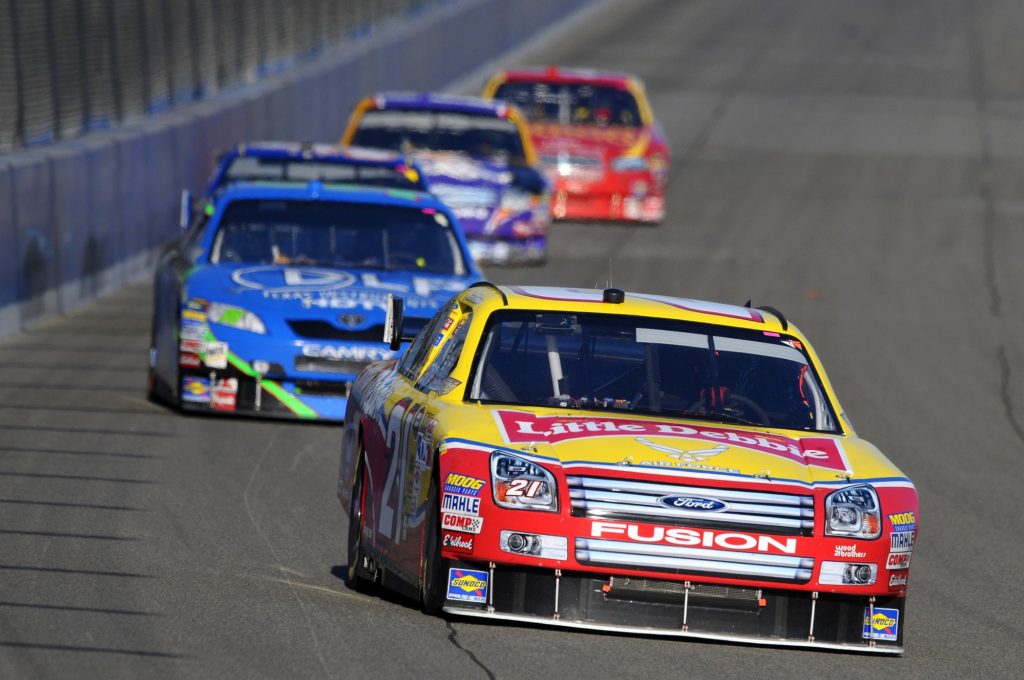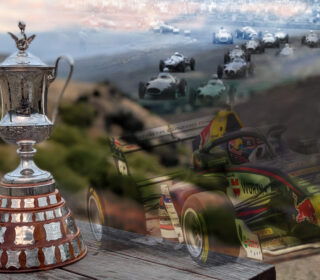Supercars GEN3: Other Mid-Year Rules Swaps

Our recent edition of the On the Grid podcast featured a discussion regarding the impending mid-season introduction of the Gen3 Supercars rules package in 2022, a call that has caused much debate within the industry.
The timeline for its introduction will currently see the new chassis and engine package debut in August, at roughly the halfway point of the season, pending any supply and development issues, which have seemingly already pushed back the package’s on-track debut.
But is a mid-season wholesales technical rules change all that radical?
Here are three examples from recent times in the USA…
The NASCAR COT
At the turn of the century, safety was an uncomfortable issue simmering in NASCAR.
The period of 2000 to 2001 was one of the most difficult in the sport’s history, with Rick Houston’s 10-part podcast series on the subject well worth a listen.
Firstly, third-generation racer Adam Petty died at the brand new New Hampshire International Speedway, followed two months later by Kenny Irwin, at the same track, same corner.
Capping a terrible year, battling Truck Series driver Tony Roper passed away following an accident in Texas, and Blaise Alexander lost his life in an ARCA race at Charlotte.
Personal safety was a hot topic – some like Jeff Burton and Brett Bodine embraced change, like the introduction of the HANS device. Other hard heads saw it as being soft.
Then, in the final turn of the 2001 season opening Daytona 500, the sport lost Dale Earnhardt.
Outside of the safety items worn by the drivers, SAFER barriers became the norm. At the same time, the cars also came under the microscope, with NASCAR developing the Car of Tomorrow, a standardised platform, which essentially still underpins all of the machines in the top two tiers of the sport to this day.
It’s as if Supercars are stealing a page from the NASCAR playbook; the COT had a focus on safety, performance, competition and cost-efficiency.
The fifth-generation rules paved the way for bigger cars with a larger roll cage and more extensive crumple zones, with the driver sitting some 10cm more towards the centre of the vehicles.
The cars from the various manufacturers, Ford, Chevrolet, Dodge and Toyota, were identical apart from sticker treatments, all fitted with an adjustable front splitter paired with a rear wing
When combined, the design’s boxy appearance did not exactly endear the package to fans.
The configuration first hit the test track in late 2005 and was extensively benchmarked before its introduction in race conditions, which came in March 2007.
Now, NASCAR differs from Supercars because the teams have vast stockpiles of chassis – essentially, they are a disposable commodity, while Downunder, it would be more standard practice for a two-car squad to have a lone spare back at the workshop.
Initially, the sanctioning body proposed a two-year rollout for the platform. The new and old generation of cars were to be rotated throughout the 2007 (for 16 races of 36 for the COT) and 2008 (26 races) seasons before full-time implementation in 2009.
However, a vote of team owners saw 80% in favour of a full-time switch from the start of the 2008 season, which was ultimately accepted. Pictured top is Marcos Ambrose making his NASCAR Cup debut for the famed Wood Brothers aboard a COT car at Sonoma that year.

So instead of a clean swap, as proposed by Supercars, NASCAR teams ran two concurrent rules packages switching throughout the ’07 season.
Interestingly, the introduction of the platform to the second-tier Xfinity Series also saw two different rules packages run side-by-side throughout that year.
First hitting the track in July 2010, the new car was utilised for four non-adjacent events before its full-time adoption from the start of 2011.
In Xfinity spec, the cars use a slightly longer wheelbase and different body styles to the Cup cars, with the platform having also been handed down to the lower level K&N Series and ARCA Series from 2015.
The subsequent Gen 6 NASCAR Cup platform started testing in 2010 before being brought in as the sole package used from the start of the 2013 season until the end of the current season.
Based on the COT, Gen 6 has further roll cage bars, some carbon fibre bodywork, and body styling applicable to each individual manufacturer, a practice adopted by the Xfinity Series in 2010.
If a primary objective of the COT was safety, then it has performed well, with NASCAR being fatality-free since the start of 2001.
The next-generation NASCAR package comes onto the scene in 2022, with a design that takes many technical cues from Supercars, such as a five-speed Xtrac transaxle, lower-profile tyres on 18″ wheels with centre lock hubs, independent rear suspension and full composite bodies, with most components now supplied by specified vendors.
The test package debuted in October 2019, but like Supercars, its introduction has been delayed by at least a year due to COVID-19.
Indy Racing League
Much has been noted in the motorsport press recently regarding the 25th anniversary of the Indycar split, with CART going one way and the Indy Racing League another.
The breakaway IRL chose a model whereby its jewel in the crown event, the Indianapolis 500, would be the finale of their season, therefore stepping out of line with other major league motorsports competitions with a schedule spread across two calendar years.
For the inaugural 1996 season, the IRL’s formula dictated previous CART-spec cars from 1995 and earlier, with the calendar consisting of only three events – Walt Disney World, Phoenix and the Indy 500.
The 1996-’97 season was also slated to finish at Indy, but early in the running, it was decided to revert to the more normal scheduling, which saw the IRL’s calendar run from August 1996 to October 1997, and a more traditional schedule from 1998 onwards.
With the competition’s new technical package not coming online until January 1997, the first two events of the season were run with the ex-CART machinery, which Scott Sharp and Richie Hearn won.
The new package for 1997 stripped the cars of technicalities, and importantly for the series, cost, with chassis available for US$263,000, with engines quoted at US$75,000 each, down from the previous Reynards and Lolas at $400,000 a pop plus powerplant.
Chassis were provided by Dallara, G Force and Riley and Scott, with the new naturally aspirated V8s coming from Oldsmobile and Infiniti, with the first G Force/Oldsmobile tested on November 12 1996, only 74 days ahead of its debut.
A sign of the differences in the packages could be seen in their relative qualifying times at Indy: Arie Luyendyk set a four-lap qualifying record in 1996 that stands to this day at 236.986mph, while he topped the 1997 charts at 218.263mph.
Interestingly, the season review yearbook of the IRL largely glossed over the two 1996 races, only listing the scoring charts in its trailing pages…
Did It Matter?
The history books show that despite the mixed-up regulations in the 2007 NASCAR Cup Series, Jimmie Johnson proved victorious at the season’s end, claiming the second of his five straight titles.
In the 2010 Xfinity Series, Brad Keselowski was a deserving champ, winning six races and finishing in the top-five 26 times from 35 races, an impressive strike rate.
In the 1996/’97 IRL season, Tony Stewart bounced back from a tardy start with the old chassis to win the crown, in a season which witnessed a remarkable quantity of inconsistent results amongst the leaders, with nine winners in ten events.
Is it ideal to swap rules packages mid-season? Probably not.
But the fact that instances like these are often glossed over when considering the timing of the introduction of Supercars Gen3, demonstrates that a mid-season swap isn’t that big of a deal in the long term.







